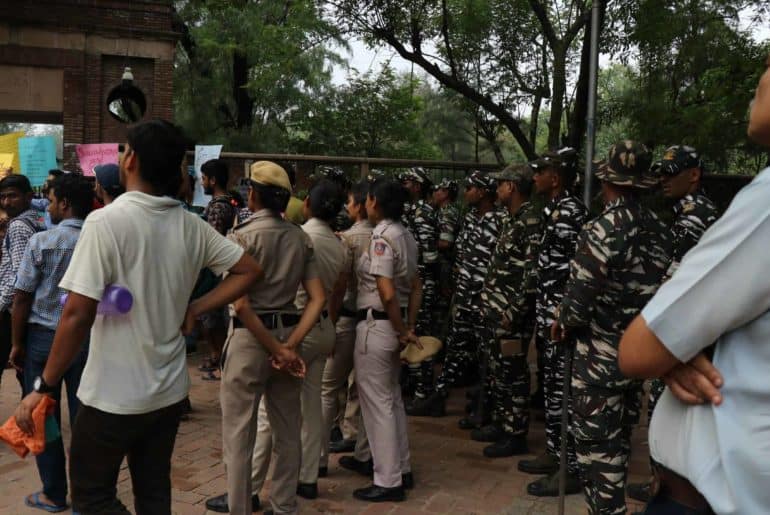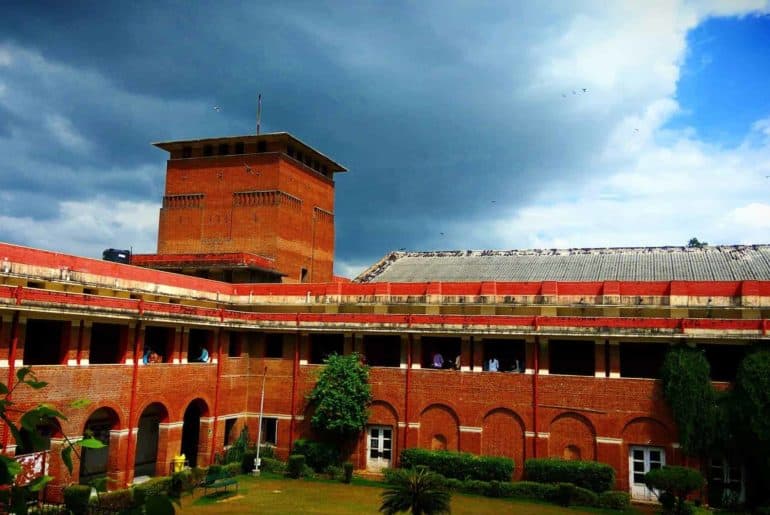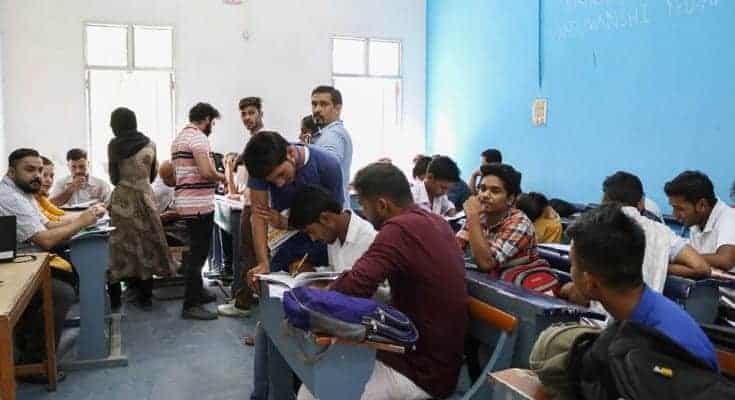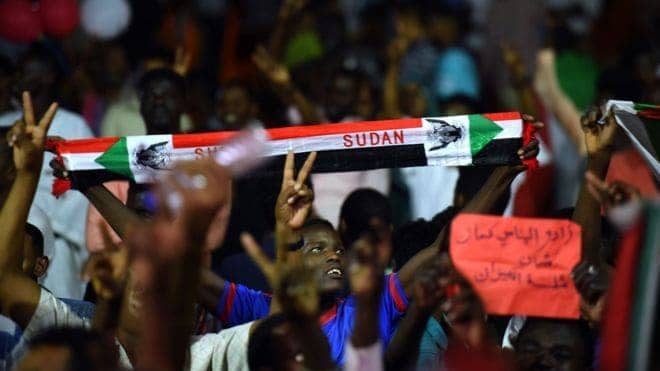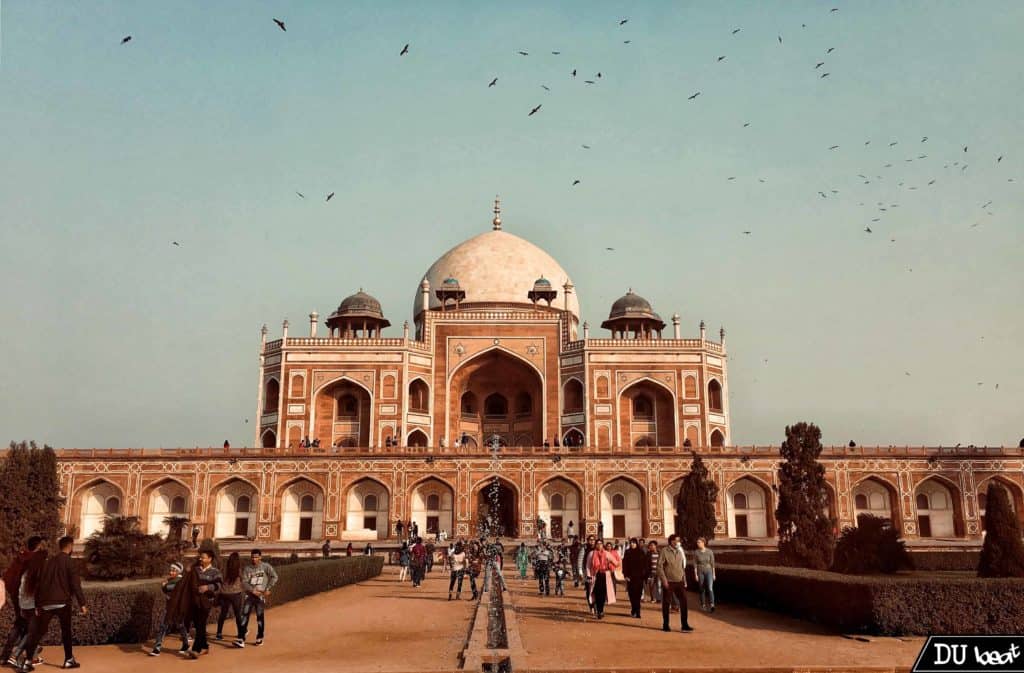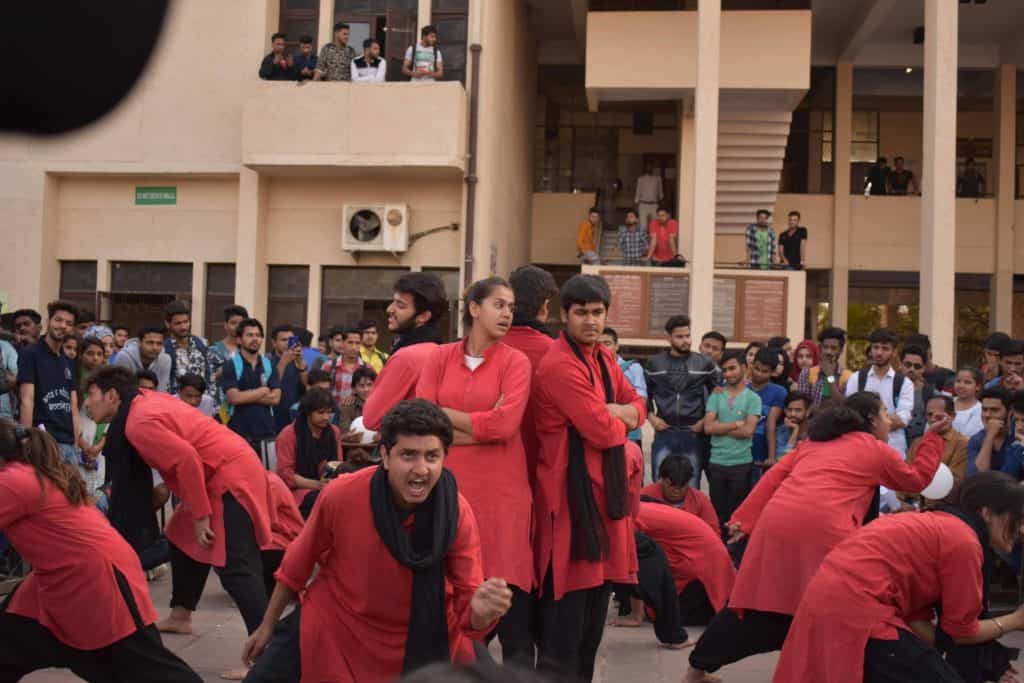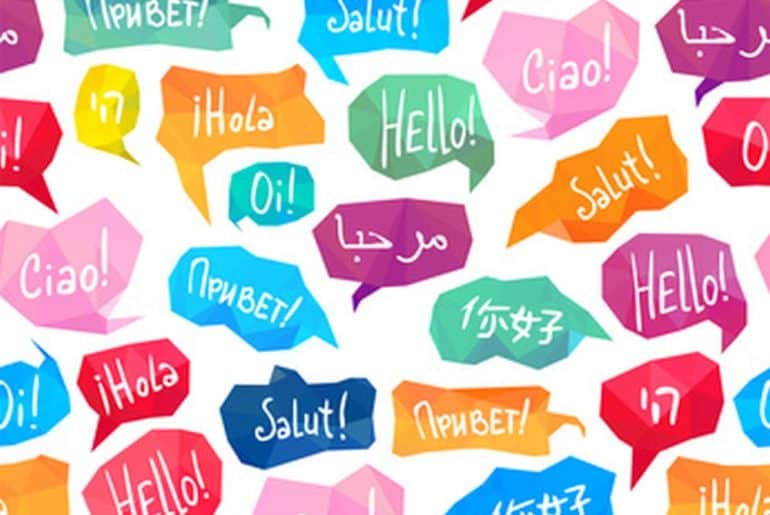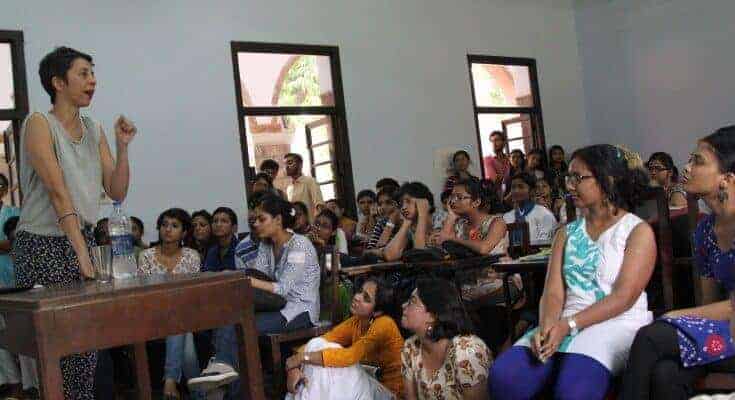March in defence of academic freedom and Akhil Bharatiya Vidyarthi Parishad’s (ABVP) interference in the syllabus making of various departments of the University of Delhi, namely English, History, Sociology and Political Science took place at the Faculty of Arts on 23rd July amid tensions between the ABVP, departments involved and other student bodies. The protest took a political turn when the members of ABVP and Delhi University Students Union (DUSU) held a counter-protest expressing dissent over the protest.
Students from the English Department and student unions like Students Federation of India (SFI), All India Students Association (AISA), Krantikari Yuva Sangathan (KYS), Pinjra Tod, along with the Delhi University Teacher’s Association (DUTA) held a march in the north campus of DU against ABVP’s opposition to DU’s syllabus-making process. An exercise that was meant to be academic in nature took a distinctly political turn at the meeting of the standing committee on academic matters, where the syllabus was presented on11th July. Rasal Singh, an elected representative of the National Democratic Teachers’ Front (NDTF) which is supposedly aligned with the ideology of the Rashtriya Swayamsewak Sangh (RSS), took issue with parts of the English syllabus that he wanted to be removed and some of the history syllabus that he wanted to be added.
The protest came in the wake of the episode of ABVP barging into the compound of the Vice Regal Lodge, and was rumoured to be asking for three professors, including the Heads of English and History department, to be handed over to them. Since then, ABVP has been protesting against those departments.
Kawalpreet Kaur, Delhi State President of AISA said, “It is well known that the syllabus of Delhi University has an unmatching standard. This owes to the professors who worked hard to maintain the DU’s academic quality. Clearly, ABVP’s intervention calls for systematic destruction of the course content of Delhi University. It is high time that we should all join hands and resist all such moves.”
Changes in the syllabus proposed by the English department of the University were opposed in a meeting of the Standing Committee to review the Undergraduate syllabus on 11th July. Among the proposals was the inclusion of study materials related to the role of the Rashtriya Swayamsevak Sangh (RSS) in the 2002 Gujarat riots, and use of Hindu deities in the reading of Queer Literature. DU, having one of the most prestigious and world-class education in humanities and social sciences intends to provoke a critical faculty among the students. However, the references to Hindu deities and Gujarat riots have irked the right-wing forces.
Mahima Chaudhary, a student of Hindu college told DU Beat, “In an academic institution, no party has any right to dictate what should be taught and what not. It is truly fascist and undemocratic.”
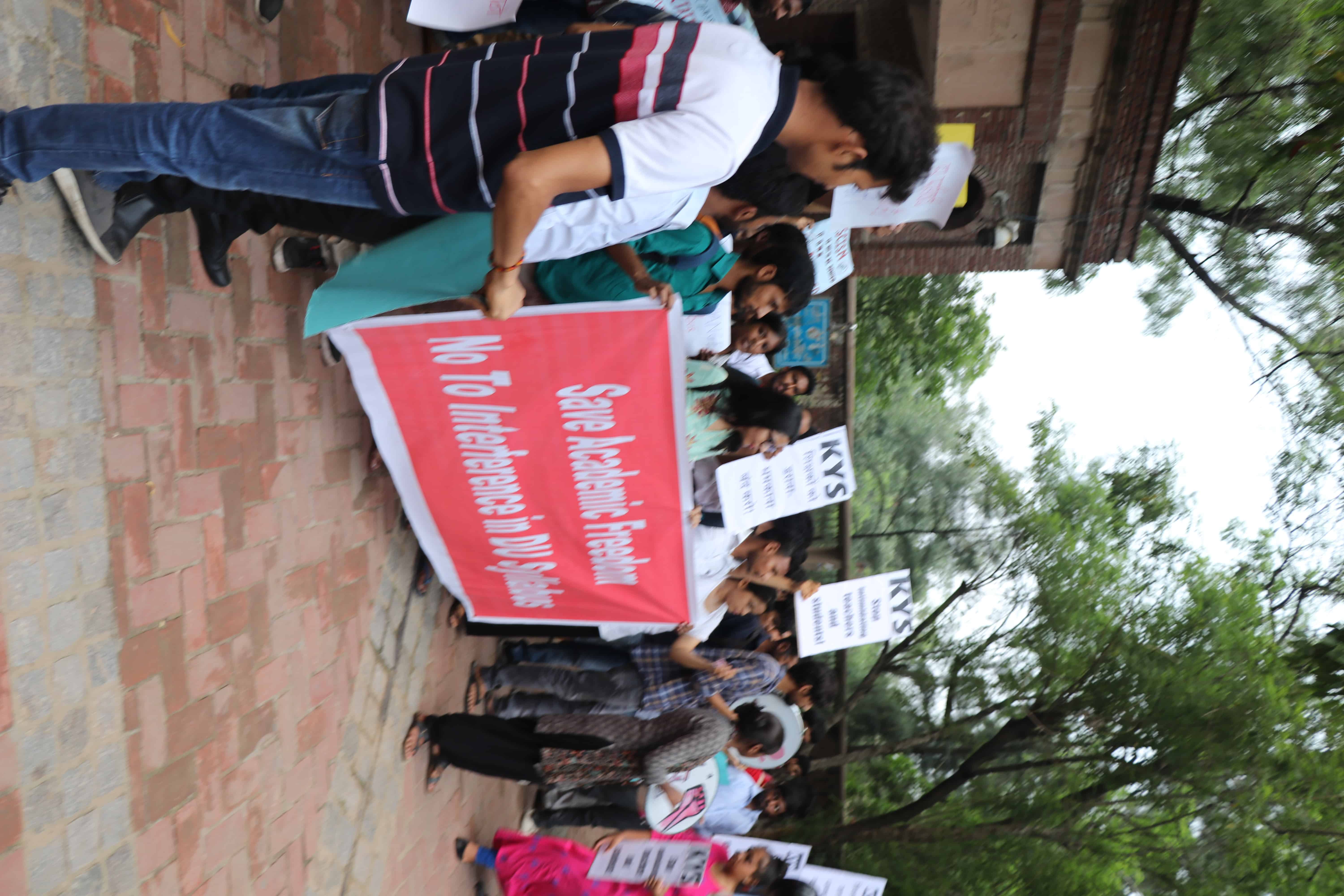
ABVP and Delhi University Students Union (DUSU) have sought support from the academic world for representation of the students with regards to the inclusion of three R’s in the syllabus i.e. representation, review of the syllabus and rational debate. ABVP emphasised on the need for democratisation of academia. However, the intimidation and threatening nature of dissent ABVP used turned out to be anything but democratic.
Addressing the students, Sachin Narayanan, who teaches English at Dyal Singh College, said, “The controversy over the short story ‘Maniben alias Bibijan’ exposes the sinister designs of RSS-BJP government-backed groups and individuals in academia. Factually, neither this story nor the text containing this story was part of the Syllabus Committee’s proposed Undergraduate Programme English language syllabus at any stage. Bunch of lies are being spread to misguide people which must be exposed.”
Given the fact that the revised syllabus was uploaded on the website of the respective departments in the month of May, and feedback from the public was invited before it was presented before the University’s statutory bodies on 11th July, none of the objections was raised, giving the whole syllabus-making process a political turn. The protest took a political turn when ABVP and DUSU held a counter-protest outside the office of HoDs of 5 Departments of English, Sociology, Political Science, History, and Hindi. Headed by the President, Shakti Singh, members were seen shouting slogans like, “Tum naxalvaad se desh todoge, hum rashtravaad se jodenge” and criticised communist and left-wing forces in the campus. The campus had a heavy presence of police in view of the political turn the events had taken.

Shakti Singh told DU Beat, “The way in which Hindu deities are being depicted in the syllabus is very unfortunate. We have written to the Chancellor of DU for the students’ representation in the syllabus making process, and we demand the administration to bring in a new syllabus considering the demands of the students.”
“The entire left-wing professors and the administration of Delhi University must be held responsible for this.” he further added.
The fact of the linkages between Hindu deities and LGBTQ being regarded as “unfortunate” is itself contradictory for a progressive institution like DU. The academic fervour of the University stands threatened and vulnerable by the political turn the events have taken. The subjects of humanities and social sciences are undoubtedly political in nature; however, they also amalgamate the confluence of various thought of schools and discourses. Turning a blind eye and creating a political situation on a dominant opinion threatens the academic stimulation of the various courses being taught in the University. The consequences of the ideological warfare have to be borne by the students and the politicisation of an academic affair raises eyebrows over the academic autonomy of the University
Feature Image Credits: Sriya Rane and Noihrit Gogoi for DU Beat
Sriya Rane

